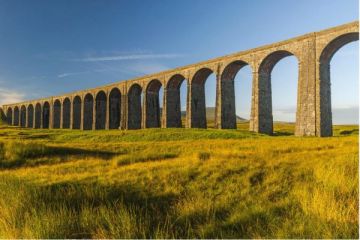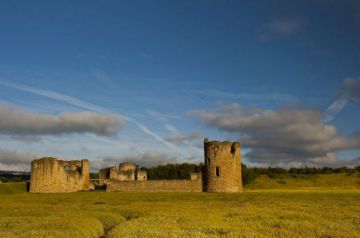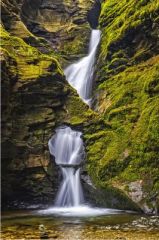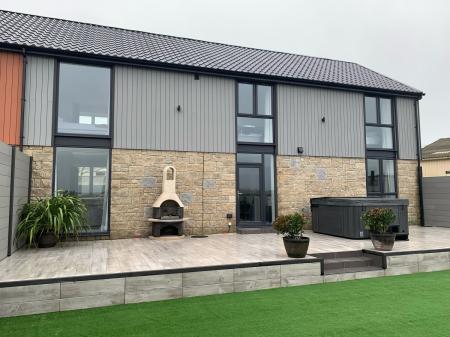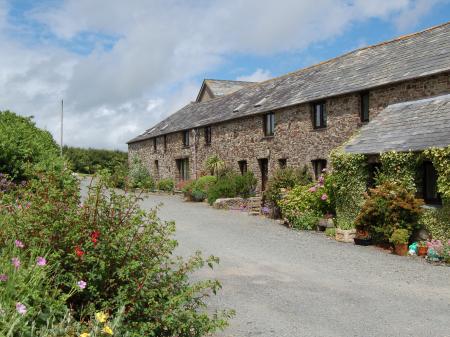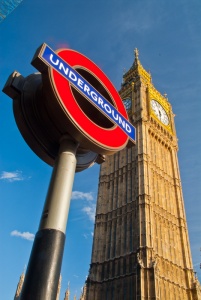
of Westminster (Big Ben)
We start our virtual tour of England at London - since this is the place most travellers enter England. The River Thames divides Greater London in half, with the old city and most of the attractions of historical interest located to the north of the river.
There was a Celtic settlement here before the Romans came in the early first century AD, but it was the Romans that turned London into a major trading centre. The old Roman walls helped define the city for over a thousand years, and today the financial district ("The City") fills much of the space between those walls.
In 1066 the Normans came calling. William the Conqueror began building the Tower of London to keep the Londoners in line, and the Tower has been expanded and added to many times since. It has seen executions, murder, and dramatic escapes over the centuries. A list of the prisoners who have been held within its walls reads like a who's who of English history.
Not far from the Tower of London is domed St Paul's Cathedral, built by Sir Christopher Wren in ebullient classical style after the previous St Paul's was destroyed in the Great Fire of London (1666).
Within St Paul's is the Whispering Gallery, so named because a whisper against one side of the dome can be heard clearly on the far side of the dome some 112 feet away. Within St Paul's are the tombs of the Duke of Wellington, poet John Donne, and Wren himself, as well as artists such as Joshua Reynolds and JMW Turner.

London is blessed with some of the finest museums in the world. Choose from the National Gallery, Britain's national collection of European art, or the nearby National Portrait Gallery, with likenesses of the famous and infamous in British history. The National Gallery fronts on Trafalgar Square, famous for the statue of Admiral Nelson atop his tall, slender column - and the pigeons which gather at his feet.
The elegant district of Kensington houses several more excellent museums. The Victoria and Albert (affectionately known as "The V&A") is devoted to arts, crafts, and design from around the world. The nearby Science Museum explores the marvelous world of science through hands-on exhibits and the Natural History Museum showcases Britain's natural world, with dinosaur skeletons, fossils, and exhibits on human biology.
The familiar clock tower of Big Ben (the name actually refers to the bell within the tower itself) soars above the neo-Gothic Houses of Parliament in Westminster. Just behind the Parliament buildings is Westminster Abbey, begun by Edward the Confessor in the 11th century.

The Abbey can claim to be Britain's national church; certainly it contains the tombs and memorials of more famous Britons than anyplace else. From authors such as Shakespeare, Hardy, and Keats, to politicians like Winston Churchill and most of the kings and queens of England since the medieval period.
Visitors willing to venture further afield than the city core have abundant choices for an enjoyable outing. To the east lies Greenwich, where you can straddle 0ð Meridian and stand with one foot in each of the east and west hemisphere. The Old Royal Observatory at Greenwich traces the history of navigation and the measurement of time.
Near the riverbank lies the Royal Naval College, designed by Christopher Wren, and Queen's House, built by Inigo Jones for Queen Henrietta Maria. Also on display is the Cutty Sark - the last and fastest of the clipper ships which plied the tea trade in the Orient during the late 19th century.

Greenwich can be reached by regular boat service along the Thames. Boats also travel west, up the river to Hampton Court, an extravagant palace built by Cardinal Wolsey, who later found it politically prudent to give it to his master, Henry VIII. Hampton Court is famous for its hedge maze, and recreations of authentic Tudor gardens.
On the theme of gardens, don't overlook Kew Gardens, located just a few miles downriver from Hampton Court. Kew was the first botanical garden in Britain, and it houses a vast array of plants from around the world in its massive Victorian greenhouses. Across the river from Kew is Syon House, an opulent stately home designed for the Dukes of Northumberland.
With all this emphasis on history, it is easy to forget that London is a bustling, modern city. The theatre district around Shaftesbury Avenue boasts some of the finest theatrical events in the world, from first-run plays to traditional favourites. And modern attractions like the British Airways "London Eye" and the Millennium Dome vie for traveller's attention. London has so much to offer the visitor that you could be forgiven for never venturing beyond the city - but then you'd miss out on the rest of England!






